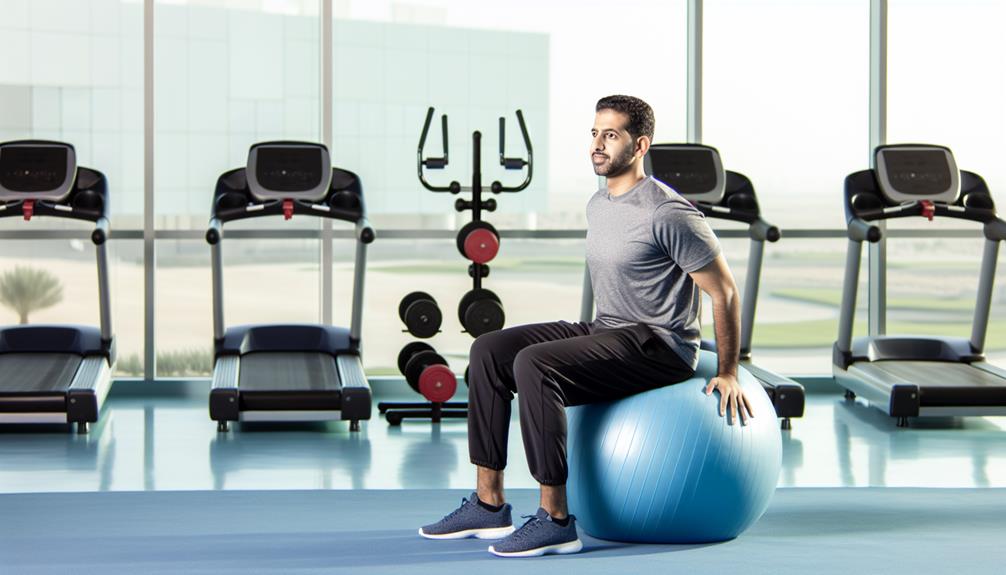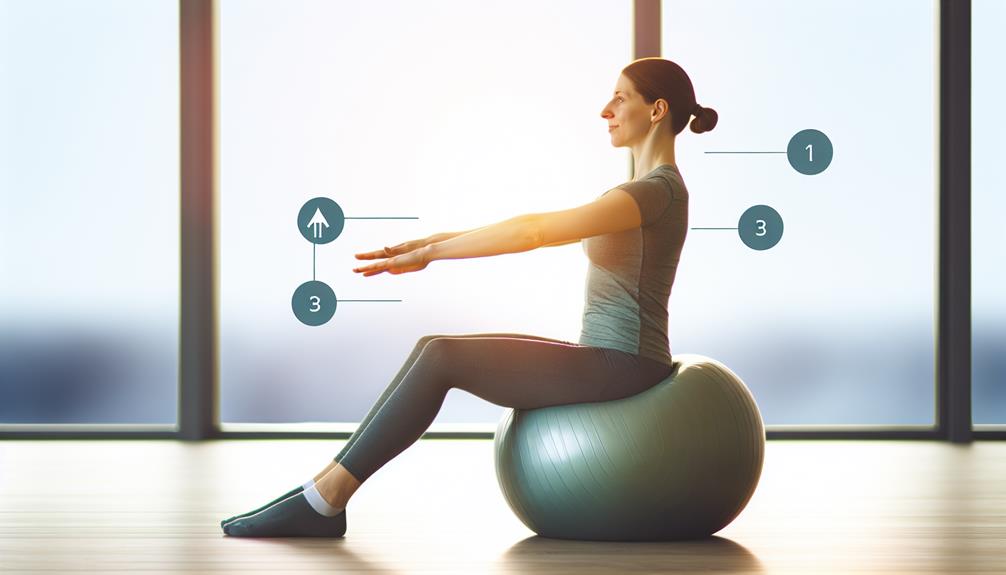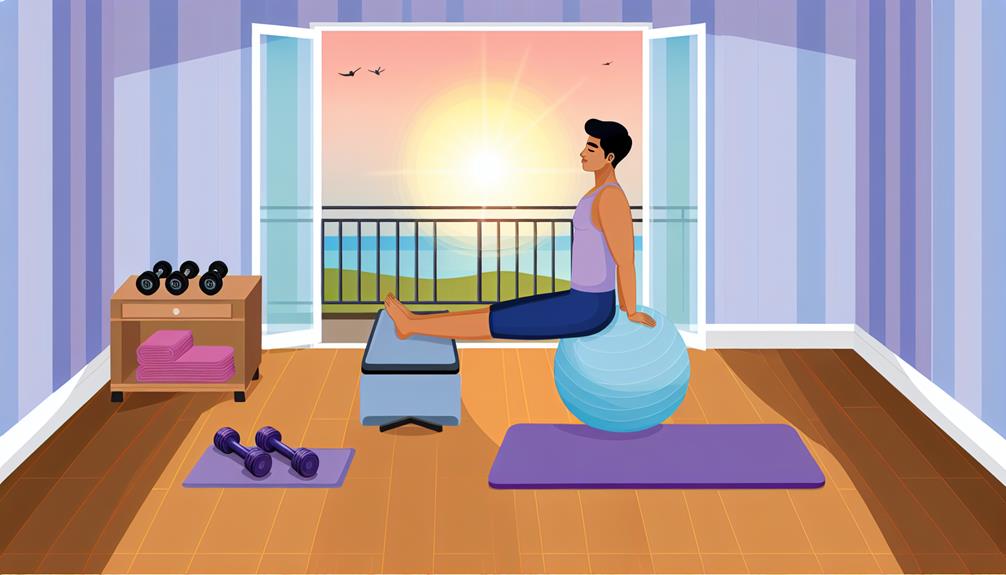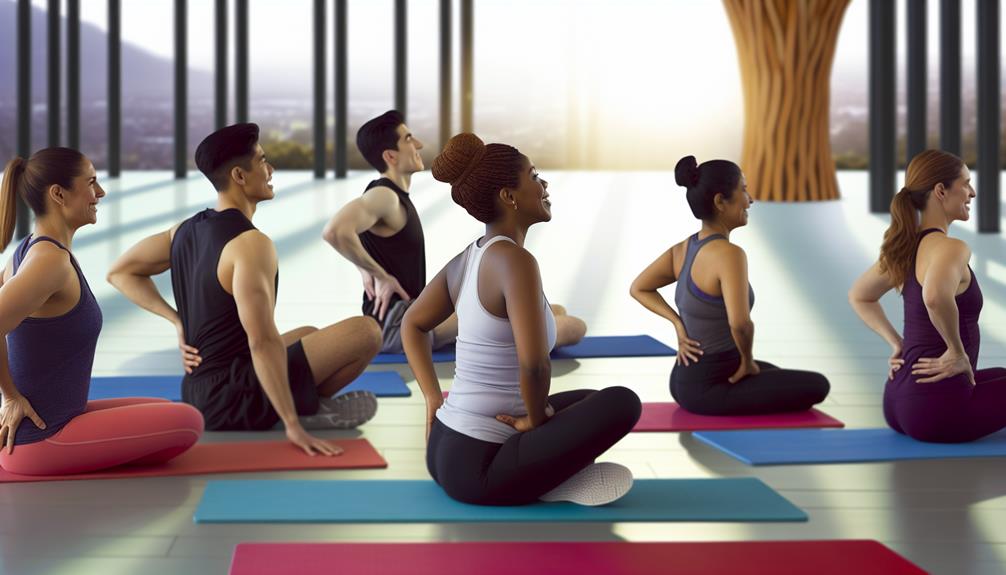Seated Good Mornings are an effective exercise aimed at strengthening the lower back while ensuring safety and stability. Performed in a seated position, this exercise minimizes the risk of injury commonly associated with standing variations. It effectively targets the erector spinae, glutes, and hamstrings, making it adaptable for individuals with mobility issues. Proper technique, including core engagement and maintaining a neutral spine, is essential for maximizing benefits and reducing the risk of injury. Integrating this exercise into a regular routine enhances functional fitness and overall physical health. Understand the nuances further to optimize your results effectively.
Key Takeaways
- Seated Good Mornings focus on enhancing lower back strength and stability while minimizing injury risk through a controlled seated position.
- Engaging your core is crucial to stabilize the spine and maintain proper form during the exercise.
- A hip hinge movement effectively targets the erector spinae, glutes, and hamstrings for overall lower back development.
- Avoid common mistakes like incorrect posture and rushing the movement to maximize effectiveness and prevent injury.
- Incorporate Seated Good Mornings into your routine 2-3 times weekly, gradually increasing resistance for continued strength gains.
What Are Seated Good Mornings?

Seated Good Mornings are a specialized exercise primarily aimed at strengthening the lower back and improving overall core stability. This exercise belongs to a category of seated variations that provides a unique approach to back strengthening while emphasizing back safety. Unlike traditional Good Mornings, which are performed standing, the seated position minimizes the risk of injury by reducing the load placed on the lower extremities. Incorporating effective study strategies, such as those found on Study Island, can also enhance your overall performance, as test preparation resources play an essential role in academic success.
In the seated Good Mornings, the individual typically sits on a bench with feet flat on the ground, allowing for a controlled range of motion. The movement involves hinging at the hips while maintaining a neutral spine, thereby engaging the muscles of the lower back and core. This modification not only facilitates proper alignment but also guarantees that the lower back is adequately supported throughout the exercise.
Moreover, incorporating seated variations of Good Mornings can be particularly beneficial for individuals who may have mobility issues, enabling them to engage in effective core strengthening without undue strain. Overall, Seated Good Mornings represent an accessible yet effective means to enhance lower back strength while prioritizing safety and stability.
Benefits of Seated Good Mornings
Numerous benefits can be derived from incorporating Seated Good Mornings into a fitness regimen. This exercise variation specifically targets the lower back, promoting muscular strength and stability. By performing Seated Good Mornings, individuals can enhance the development of the erector spinae, gluteal muscles, and hamstrings, contributing to a well-rounded lower body workout. Additionally, maintaining physical health is essential, especially for those seeking extensive care options such as those offered by Syracuse Community Health Center. Moreover, this exercise allows for greater control over form and range of motion, greatly reducing the risk of injury compared to traditional standing variations. The seated position also enables individuals to focus on their core engagement, enhancing overall stability during movement.
In addition to physical benefits, Seated Good Mornings can improve functional fitness, aiding in daily activities that require bending and lifting. This exercise fosters a sense of community, as individuals can share their progress and techniques with others who prioritize lower back health.
Proper Technique and Form

Achieving the benefits of Seated Good Mornings necessitates a focus on proper technique and form. This exercise primarily targets the lower back and hamstrings, making correct posture essential for maximizing effectiveness and minimizing injury risk.
To execute the Seated Good Morning, begin by sitting on a bench with feet flat and shoulder-width apart. Engage your core to stabilize your spine. Initiate the movement with a hip hinge by leaning forward at the hips, maintaining a neutral spine. This hip hinge activates the posterior chain, ensuring peak muscle engagement.
The following table outlines key components of proper technique:
| Component | Description | Purpose |
|---|---|---|
| Core Engagement | Tighten abdominal muscles | Supports the spine during movement |
| Hip Hinge | Bend at the hips while keeping the back straight | Targets lower back and hamstrings |
| Neutral Spine | Maintain a straight line from head to tailbone | Prevents injury |
| Controlled Motion | Perform the movement slowly and deliberately | Enhances muscle control and strength |
Common Mistakes to Avoid
When performing Seated Good Mornings, several common mistakes can undermine the effectiveness of the exercise and increase the risk of injury. One prevalent error is adopting incorrect posture, which compromises the alignment of the spine. Ensuring proper spinal alignment is vital; failure to do so can lead to unnecessary strain on the lower back. Similar to how Tesla's innovations emphasize the importance of precision in engineering, maintaining proper form during exercise is essential for peak results.
Another significant mistake is overextending the spine during the movement. Overextension can occur when individuals attempt to push their range of motion beyond their capabilities, resulting in excessive stress on the vertebrae and surrounding muscles. This not only diminishes the exercise's effectiveness but also elevates the risk of injury.
Additionally, many practitioners neglect to engage their core throughout the exercise. A weak core can lead to instability, further exacerbating the potential for incorrect posture and overextension.
Incorporating Into Your Routine

Incorporating Seated Good Mornings into your fitness routine can greatly enhance lower back strength and overall stability. To achieve ideal results, it is essential to focus on routine integration that allows for consistent practice without overwhelming your regimen. Many people are discovering the benefits of remote work, allowing for more flexibility in their schedules, which can also facilitate regular exercise routines best sites for remote jobs. Begin by scheduling this exercise two to three times per week, making sure that you allocate sufficient recovery time for your muscles to adapt and strengthen.
When planning your exercise scheduling, consider pairing Seated Good Mornings with complementary exercises that target the core and lower body, such as planks or glute bridges. This strategic approach not only bolsters lower back strength but also fosters a sense of community within your workout group, as participants can share experiences and progress.
To further enhance your routine, monitor your form and gradually increase resistance as your strength improves. Utilize feedback from peers or trainers to guarantee that you maintain proper technique. Finally, celebrate milestones in your progress, which fosters belonging and motivation within your fitness community. By integrating Seated Good Mornings thoughtfully into your routine, you can cultivate a resilient lower back and contribute to your overall well-being.
Frequently Asked Questions
Can Seated Good Mornings Help With Sciatica Pain Relief?
Seated Good Mornings may serve as an effective exercise within a broader regimen of sciatica exercises aimed at alleviating discomfort. By gently engaging the lower back and hamstrings, this movement can promote flexibility and strength, contributing to overall pain management. However, it is vital for individuals with sciatica to consult a healthcare professional before initiating any exercise program to guarantee safety and appropriateness tailored to their specific condition, fostering a supportive approach to recovery.
What's the Best Time of Day to Do Seated Good Mornings?
The ideal time to perform seated good mornings largely depends on individual schedules and preferences. However, incorporating them into a morning workout routine can enhance morning flexibility, setting a positive tone for the day. Engaging in this exercise early may also improve circulation and prepare the body for daily activities. Consistency is key; therefore, selecting a time that aligns with your lifestyle will yield the best results for both physical health and overall well-being.
How Often Should I Perform Seated Good Mornings Each Week?
To optimize benefits while ensuring safety, it is recommended to perform seated good mornings two to three times per week. This exercise frequency allows adequate recovery time for the lower back muscles, promoting strength without overexertion. It is essential to maintain proper form throughout each repetition to prevent injury and enhance effectiveness. Individuals should listen to their bodies and adjust frequency as needed, fostering a sense of belonging in a community focused on wellness.
Are There Any Age Restrictions for Doing This Exercise?
There are no strict age restrictions for performing this exercise; however, adherence to safety guidelines is paramount. Individuals of varying ages should consider their fitness level and any pre-existing conditions. Exercise modifications may be necessary to accommodate personal capabilities, particularly for older adults or those with limited mobility. Consulting a healthcare professional or qualified trainer can facilitate safe practice, ensuring that the exercise is beneficial while minimizing the risk of injury.
Can Seated Good Mornings Be Done Without Weights?
Seated good mornings can indeed be performed without weights, making them accessible for various fitness levels. A benefits analysis reveals that bodyweight versions enhance flexibility and core stability while minimizing injury risk. Technique tips include maintaining a straight back, engaging your core, and controlling the movement to guarantee proper form. This approach not only fosters strength development but also promotes a sense of belonging within a supportive exercise community, encouraging participation and progression.

